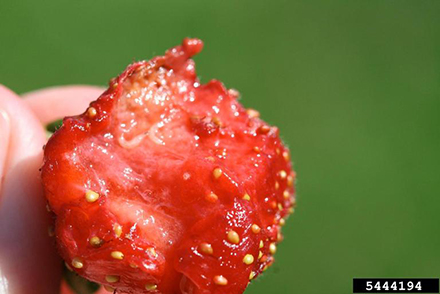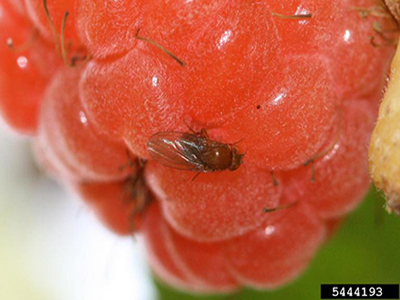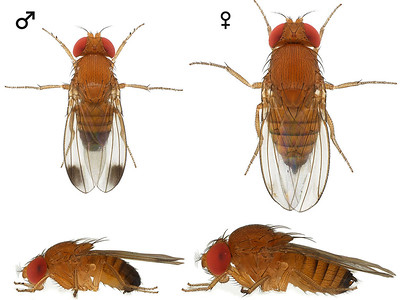PLANT PEST

Spotted wing drosophila
Exotic to Australia
Features: A tiny fly (2–3 mm) that attacks a range of soft-skinned fruit and reduces crop yield and quality through direct feeding damage and secondary infection of the fruit
Where it's from: Originally from southeast Asia; has spread to the USA, Hawaii, Japan, Italy, Spain and France
How it spreads: Importation of larvae-infested plant material, primarily fruit; short-distance local spread by adult flies
At risk: Berries, cherries, peaches, nectarines, apricots, plums, prunes and grapes; apples, pears and other fruit with thicker skins once fruit begins to rot
Keep it out
Overseas, the spotted winged drosophila (Drosophila suzukii) is a major horticultural pest of thin-skinned fruit, including berries (blueberry, raspberry, blackberry, boysenberry, strawberry), stone fruit (cherry, nectarine, peach, apricot, plum, prune) and grape. It also attacks apples, pears and other fruit with thicker skins once fruit begins to rot.
Females lay eggs in fruit, causing feeding damage as well as rotting. While most flies can only lay eggs in ripe or damaged unripe fruit, this species can attack unripe and undamaged fruit. As a result, it can severely reduce yield, with some berry growers in North America reporting up to 100 per cent crop losses.
Spotted wing drosophila can spread rapidly, as the larvae hide in developing or ripe fruit while it is transported long distances from farms to markets. The adults can only fly short distances.
If this exotic fly established in Australia, it would cause serious losses for growers of soft berries, stone fruits and grapes.
Importing goods
To keep spotted wing drosophila out of Australia, never ignore Australia’s strict biosecurity rules.
Import shipments may need to be treated and certified, so before you import, check our Biosecurity Import Conditions system (BICON).
What to look for
Adult flies are tiny, just 2–3 mm long. They have prominent red eyes, and their bodies are yellow–brown with dark bands on the abdomen. Males have a small, dark spot near the tip of each wing. This black spot distinguishes the spotted wing drosophila from other Drosophila species present in Australia.
Fruit damage consists of pinprick-sized holes where females have laid eggs, followed by softening, skin wrinkling and fruit collapse from feeding. Fruit will often rot.
Larvae are cream or white and about 3 mm long.


Where to look
Importers
Importation of infested fruit is the most likely way that spotted wing drosophila would enter Australia.
Growers and home gardeners
Look for:
- larvae (tiny white grubs) in undamaged fruit still on the tree
- pinprick-sized holes or scars on the fruit surface
- rotting fruit.
What to do
If you think you’ve found spotted wing drosophila flies or larvae:
- do not disturb the insect (this may be as simple as closing the doors on a shipping container, or sealing the infested fruit in a plastic container)
- collect a sample, if it is possible to do so without disturbing the flies or larvae.
Read the detail
- Exotic pest profile: spotted wing drosophila – Farm Biosecurity
- Plant Health Australia: spotted wing drosophila in cherry
- Plant Health Australia: spotted wing drosophila in blueberries
- Plant Health Australia: spotted wing drosophila in rubus
- Plant Health Australia: spotted wing drosophila in grapes
- Spotted wing drosophila (NSW government)
